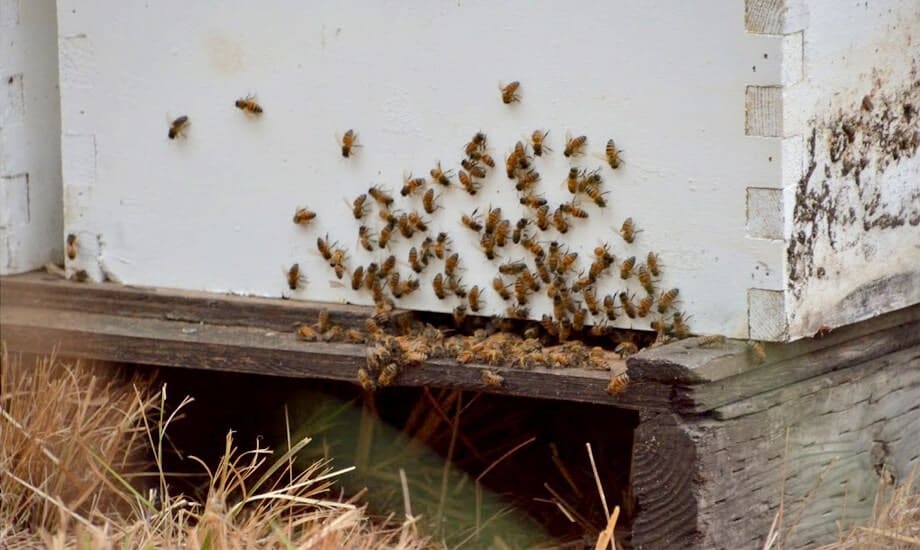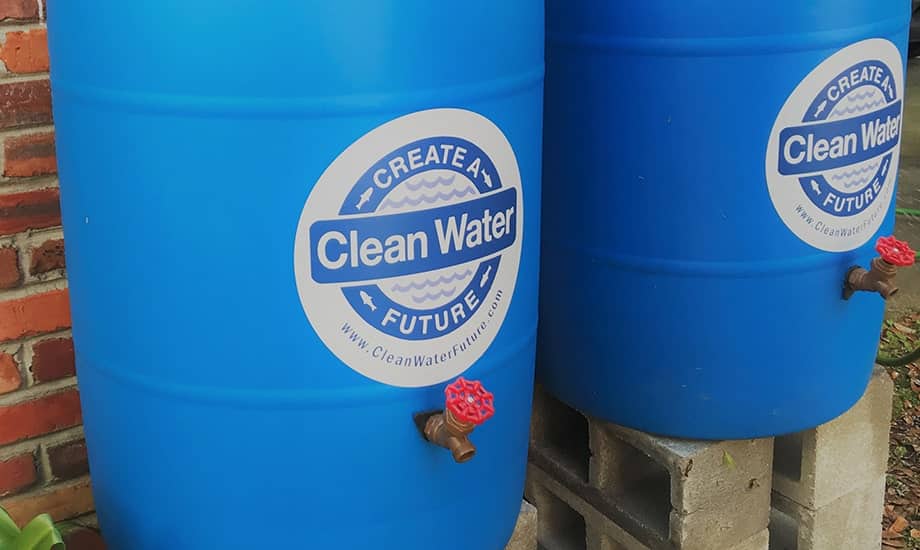- Über unser Unternehmen
- Über unseren Bericht
- Nachhaltigkeitsstrategien
- Ziele und Leistung
- ESG-Reporting-Indizes
- Bericht-Downloads
Why Biodiversity Matters
Führung
175,000
Acres Under Management
All land managed by Soterra is SFI certified, demonstrating our management practices are sustainable and responsible.
Since December 2008, Soterra, LLC, our subsidiary engaged in Land Management, has adhered to the principles of the Sustainable Forestry Initiative (SFI) and followed Best Management Practices defined by each state for its managed timberlands. Soterra forests provide timberland habitat for wildlife, forestry management services and serve as a space for recreational land use. Soterra operates in the Southeastern United States, managing 175,000 acres of timberland in Alabama, Louisiana and Mississippi. In 2021, Soterra forests sequestered 1,129,000 tons of CO2. Soterra also sold 69,200 acres of land in southwest Alabama last year, approximately 30% of the previously held land base.
In 2021, Soterra received SFI certification for all its forest management activities for lands it owned and managed, including the harvest of forest products. Soterra’s land management practices have aligned to SFI principles since 2008, but we were motivated to receive official SFI certification to create an additional accountability, receive recognition for practices already instituted and to align with the broader Greif sustainability strategy. Soterra received certification following an on-site, third-party audit. Auditors reviewed Soterra’s policies, practices, documentation and inventory data and conducted field observations to confirm alignment with all relevant SFI Objectives and Indicators. In 2022, we will use the feedback from the certification and audit processes to improve our practices and initiate corrective actions, as needed.
SFI and state-specific Best Management Practices guide Soterra’s harvesting and overall forestry practices to ensure we adhere to all regulatory requirements and apply the highest standard practices throughout our operations whenever possible. We apply a sustainable harvest methodology based on a 30-year rotation to our timberlands. Prior to harvesting any site, we conduct a thorough review of the area to assess the overall biodiversity value of the site and identify any protected animal or plant species that may be impacted by the harvest. If any areas within a site are identified as having a high biodiversity value, or serve as a habitat to a protected species, appropriate buffer zones are established to ensure that species is not impacted and, if necessary, alter preparation and harvesting methods accordingly. We perform regular field inspections and update the relevant forms. To-date, no Soterra-managed lands have been identified as having high biodiversity value; however, since 2008, nine species of concern have been identified within our geographic areas and protected as necessary.
We maintain a Safety Team within Soterra responsible for building and maintaining a strong safety culture throughout our operations. Our colleagues and subcontractors operate heavy machinery when harvesting and can drive 40,000-50,000 miles annually assessing and maintaining our land. These colleagues are required to take a defensive driving course every other year. The COVID-19 pandemic delayed the administration of the driving course in 2021, but this course will be provided online in 2022. All our operational policies, including our safety policies, extend to subcontractors that perform work on our behalf. For more information about our safety practices and priorities, please visit Gesundheit & Sicherheit.
We work to improve our land management practices through technology whenever possible. We use geographic information systems to record and track our planting, maintenance and harvesting activities and artificial intelligence and drone technology. These technological advances help to reduce the need for workers in the woods and increase efficiency and cost savings. To date, our drone pilots have mapped over 200,000 acres of company and private land.
In 2021, we continued to diversify Soterra’s revenue streams by investigating new opportunities with byproducts, consulting services, carbon storage and renewable energy. Diversification is important to mitigate risk and provides opportunities to further align our business with an increasing demand for sustainable products and services. For instance, through our consulting services we have helped regenerate and plant trees on over 22,000 total acres of private land since 2016. In 2022, we expect to further our diversification efforts and increase the percentage of our revenue from non-timber land management initiatives.
As part of our diversification strategy, we have taken steps to incorporate solar energy into land management activities. We currently have over 60,000 acres of land under solar options with seven developers. Louisiana is at the forefront of our solar initiatives, with additional projects in Mississippi and Alabama. As we expand our solar initiatives, we are committed to monitoring any impacts on the biodiversity of the lands we manage, including protecting corridors and stream zones, as needed.
Portions of our land may provide favorable geologic formations to support underground carbon storage. Carbon capture and storage is another method to reduce the amount of carbon dioxide in the atmosphere. In the coming years, we anticipate evaluating opportunities related to carbon storage. Ahead of these opportunities, we are working to gather data and build an inventory of our land by volume in 2022. Using a volume basis for benchmarking, as opposed to an acreage basis, will be important to advance harvest practices and to align with the expectations of future carbon storage projects.
Studie zur Verbesserung des Lebensraums von Bestäubern
Das Jahr 2013 markierte den Abschluss eines mehrjährigen Bestäuberforschungsprojekts, das auf den Waldflächen von Greif/Soterra LLC in Süd-Mississippi durchgeführt wurde. Die Studie wurde in Zusammenarbeit mit der Pollinator Partnership und NAPCC – den weltweit führenden Experten für Bestäubungsfragen – durchgeführt, um herauszufinden, wie Bestäuber die Nahrungsverfügbarkeit von Wildtieren in Waldgebieten beeinflussen, welchen Mehrwert die Ansiedlung von Honigbienen und Imkern in der Landschaft bietet und um die beste Managementpraxis für Ökosystemdienstleistungen in Waldgebieten zu ermitteln.
Die Studie ergab einige interessante Empfehlungen für nachhaltige Waldbewirtschaftungspraktiken, die Waldbesitzern, Bestäubern, der lokalen Tierwelt und Ökosystemen gleichermaßen zugute kommen sollten. Greif engagiert sich für seine Plattform für nachhaltige Landnutzung und wird dazu beitragen, alle daraus resultierenden Veröffentlichungen weltweit an Industriepartner, Regulierungsbehörden und Mitglieder der akademischen Gemeinschaft zu verteilen, um ein positives Umweltmanagement in Waldsystemen zu beeinflussen.
Im Jahr 2013 zeichnete die Sustainable Forestry Initiative (SFI) Soterra LLC und die Pollinator Partnership für diese Forschung mit dem begehrten Conservation Leadership Award aus. Auch der Bundesstaat Louisiana würdigte die Bemühungen im Rahmen des Programms, indem er im Frühjahr 2018 eine landesweite Pollinator Week ausrief. Ab 2021 setzt Soterra LLC seine Unterstützung für Bildung, Öffentlichkeitsarbeit, Naturschutz und wissenschaftliche Forschung im Zusammenhang mit der Bedeutung von Bestäubern in unserem Ökosystem fort, indem es sein Engagement in der Pollinator Partnership als aktives Vorstandsmitglied aufrechterhält. Weitere Informationen finden Sie in unserem Artikel in Bee Culture Magazin .

Regentonnen-Programm erhält Stewardship Environmental Award
Im Jahr 2018 ging Soterra eine Partnerschaft mit dem National Estuary Program ein, um gespendete Greif-Fässer zum Sammeln von Regenwasser zu verwenden. Im Rahmen des Programms wird jedes Fass mit einem Regenfass-Umrüstsatz ausgestattet, um Regenwasser zu speichern, aufzufangen und sinnvoll zu nutzen. Die Fässer werden in verarmten Gebieten mit historisch hohen Betriebskosten aufgestellt, die außerdem anfällig für Überschwemmungen und Wasserverschmutzung durch übermäßigen Wasserabfluss sind. Im Jahr 2019 erhielten wir in Anerkennung des Programms eine Auszeichnung für Umweltschutz von Partners for Environmental Progress. Im Jahr 2021 wurden in der Gemeinde 200 Fässer mit einer Kapazität von 260.000* Gallonen Wasser aufgestellt. Im Jahr 2022 lieferten wir weitere 222 Fässer, um dieses Projekt zu erweitern. Wir werden den Hausbesitzern bei der Installation auch die entsprechende Schulung und Anleitung geben.
*Laut der US-Umweltschutzbehörde können in den Sommermonaten mit einer Regentonne 1.300 Gallonen Wasser gespart werden.

NACHHALTIGKEITS-HIGHLIGHTS
1.1 M
Tons of CO2 Sequestered by Soterra Forests
We continue to consider and evaluate the carbon management potential of our managed land.
22,000
Acres Planted on Private Land, Since 2016
Soterra Land Management offers regeneration services to assist private landowners.





